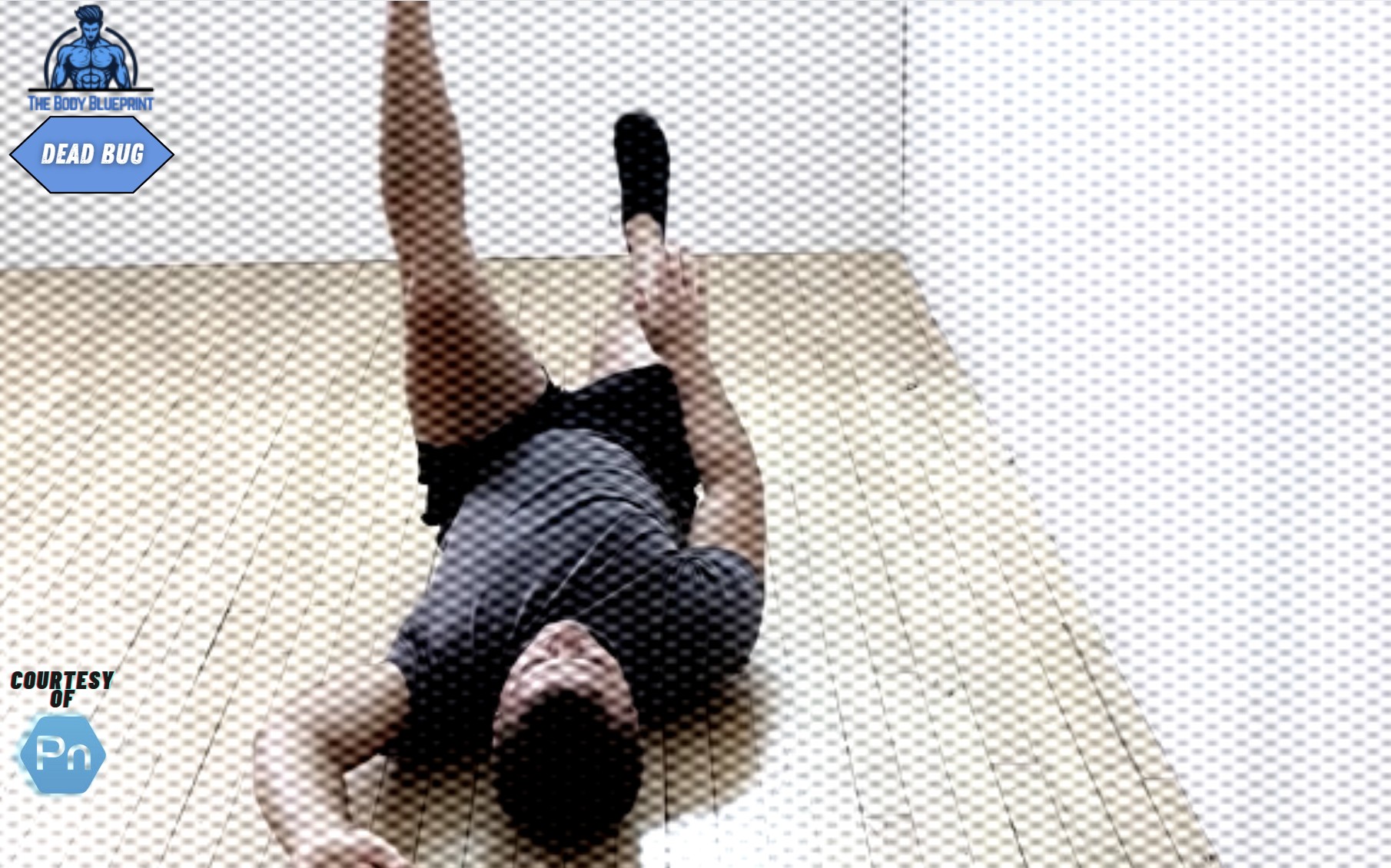The Dead Bug exercise is an essential core movement designed to improve stability, strengthen the abdominal muscles, and support the lower back. Whether you’re a beginner seeking a foundational workout or an experienced athlete looking for a targeted core activation routine, the Dead Bug is highly effective for building a solid core without putting strain on your spine. In this guide, we’ll walk through the proper technique, key benefits, variations, and common mistakes to avoid with this core-stabilizing move.
Benefits of the Dead Bug
| Benefit | Description |
|---|---|
| Improves Core Stability | Engages deep abdominal muscles to enhance overall stability. |
| Reduces Lower Back Pain | Strengthens the core, which supports the lower back. |
| Enhances Coordination | Requires simultaneous limb movement, improving motor control. |
| Safe for All Fitness Levels | A low-impact exercise suitable for beginners and advanced users. |
| Protects the Spine | Strengthens the core without putting pressure on the spine. |
Performing the Dead Bug Exercise
- Lie on Your Back: Start by lying flat on the floor with your arms extended straight toward the ceiling. Bend your knees at a 90-degree angle, keeping your feet off the floor.
- Brace Your Core: Engage your abdominal muscles by pulling your belly button towards your spine. This is essential for maintaining stability and protecting your lower back during the movement.
- Extend Opposite Arm and Leg: Slowly lower your right arm behind your head while simultaneously extending your left leg straight out without letting it touch the floor. Keep your lower back pressed into the ground.
- Return to Start: Bring your arm and leg back to the starting position and repeat on the opposite side (left arm and right leg). Focus on controlled movements, keeping your core tight throughout the exercise.
- Repeat: Continue alternating sides for the desired number of repetitions.
Muscles Worked During the Dead Bug
| Muscle Group | Function in the Exercise |
|---|---|
| Rectus Abdominis | Contracts to stabilize the torso and prevent spinal extension. |
| Transverse Abdominis | Provides deep core stability, particularly in the lower abdomen. |
| Hip Flexors | Assist in leg movements, helping to maintain balance. |
| Shoulders | Control arm movements, improving shoulder stability. |
Common Mistakes to Avoid
| Mistake | Solution |
|---|---|
| Arching the Lower Back | Keep your back pressed into the floor to avoid strain. |
| Rushing Through Reps | Perform the movement slowly to maintain control and form. |
| Not Engaging the Core | Focus on tightening your abs before starting each rep. |
| Lowering Limbs Too Far | Only extend your arm and leg as far as you can without losing core stability. |
Variations of the Dead Bug Exercise
| Variation | Benefit |
|---|---|
| Weighted Dead Bug | Hold light dumbbells in each hand to increase resistance and intensity. |
| Leg-Only Dead Bug | Focus on leg movements to isolate the lower core. |
| Arm-Only Dead Bug | Isolate the upper body by keeping your legs stationary. |
| Resistance Band Dead Bug | Add resistance bands for extra challenge and core engagement. |
Dead Bug Exercise vs. Traditional Crunches
| Dead Bug | Traditional Crunches |
|---|---|
| Low impact, suitable for all fitness levels | Can strain the neck and back if performed incorrectly. |
| Focuses on core stabilization | Primarily targets the rectus abdominis. |
| Protects the spine by minimizing flexion | May contribute to spinal discomfort if overused. |
How to Incorporate Dead Bugs Into Your Routine
- Warm-Up: Begin with the Dead Bug during your warm-up to activate your core.
- Superset: Combine Dead Bugs with other core exercises like planks or mountain climbers for a balanced core workout.
- Cool-Down: Use it as a cool-down to focus on controlled, mindful movements at the end of your session.
- Reps and Sets: Start with 2–3 sets of 10–12 reps on each side, gradually increasing as your strength improves.
Who Should Perform the Dead Bug Exercise?
- Beginners: A great introduction to core stabilization exercises.
- Athletes: Helps build a strong core foundation, essential for athletic performance.
- Individuals with Lower Back Pain: Strengthens the core and supports the spine, reducing pain.
- Fitness Enthusiasts: Ideal for adding variety and challenge to core workouts.
Conclusion
The Dead Bug exercise is an excellent way to build core strength and improve overall stability. Its emphasis on controlled, coordinated movement makes it suitable for all fitness levels, from beginners to athletes. Incorporating this core-strengthening move into your routine will not only improve your posture and protect your spine but also enhance your overall physical performance. By mastering the Dead Bug and its variations, you’ll have a reliable, low-impact exercise that provides long-lasting benefits for your core health.

